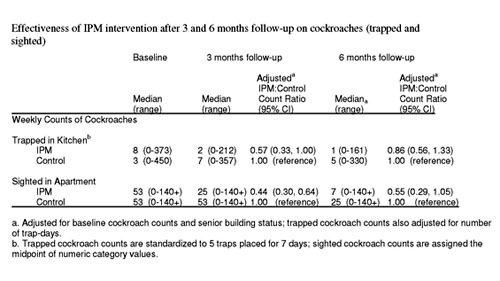04
May
New York Governor Sets Pesticide-Free Goal for State Parks
(Beyond Pesticides, May 4, 2009) Targeting areas frequented by children, such as playgrounds, picnic areas, baseball fields, campgrounds, beaches, and hiking trails, New York Governor David A. Paterson announced an initiative to substantially reduce pesticide use throughout the State park system. “New York has a magnificent State park system that is a tremendous resource for all New Yorkers,” said Governor Paterson. “People visiting our parks, particularly children, should not be exposed to pesticides. This effort will reduce or, when possible, eliminate the use of pesticides in our State parks and historic sites.”

The pesticide reduction policy is an outgrowth of Governor Paterson’s Executive Order No. 4, adopted in April 2008, which established procurement specifications to minimize State pesticide use by State agencies. The State Parks policy goes further than the Executive Order requirements by eliminating pesticide use to the maximum extent possible. The goal is to keep parks pesticide-free. The approach is outlined in the Office of Parks, Recreation and Historic Preservation’s Sustainability Plan, an agency-wide strategy to improve energy conservation, improve the sustainability of parks and historic sites, improve waste reduction and recycling efforts, enhance green procurement, and incorporate sustainability in education, training and interpretation efforts.
“Now that the snow has melted, people in every community across this State will begin visiting our parks, and for good reason””they are safe and affordable. The use of some pesticides can compromise that safety because nearly every time a pesticide is sprayed, something other than the target is hit,” said Senate Majority Leader Malcolm Smith. “Limiting their use is a very smart move and will help us avoid any potential health concerns they may cause.”
The policy asserts in the introduction that, “[T]he use of pesticides can cause potential environmental and human health risks, even when pesticides are used in compliance with regulatory requirements and manufacturer recommendations.” The goal of the policy “is to eliminate pesticide uses wherever possible. In special instances where pesticide use is required, we will limit our use to least toxic alternatives.” The policy covers all New York State Office of Parks, Recreation and Historic Preservation (OPRHP) agency facilities and operations, including concessions and contracted services.
The new policy requires implementation of an Integrated Pest Management (IPM) program for the design and maintenance of buildings, grounds, landscapes and water bodies under OPRHP’s jurisdiction. IPM is described in the policy as a decision making process, a program for long-term pest suppression or elimination based on inspection, pest population monitoring and establishing action thresholds. The IPM program will “predominantly include structural and procedural modifications that establish physical barriers to pests, and reduce the food, water, and harborage available to them.” Pests will be managed “using mechanical, sanitary, cultural, or biological means with the use of chemicals as a last resort.” After non-chemical means have been exhausted, the use of allowed least toxic pesticides include those exempt from US EPA registration due to their low toxicity; rodent control in tamper-resistant bait stations or placed in areas inaccessible to children, pets, or wildlife; U.S. EPA registered biopesticides; antimicrobial pesticides; and, boric acid and disodium octaborate tetrahydrate, silica gels, diatomaceous earth, and other non-volatile insecticidal gels and baits. Specific pesticides are banned from use including: foggers; dusts or sprays in concession or food areas; and, carbamate and organophosphate insecticides.
On February 10, 2009, Executive Order 4 Turf and Ornamental Management specifications were adopted and compels OPRHP to strive to adhere to the land care specifications and practices prepared by the Northeast Organic Farmers Associations: NOFA Standards for Organic Land Care, NOFA Organic Landcare Committee, March 2008.
Policy exceptions allow the use of pesticides (with the lowest toxicity and least persistent product to be used first) for imminent health and safety threats such as human disease outbreaks, bees, wasps, deer ticks and poison ivy situations where immediate action is required. Although attempts will be made to follow IPM practices to the maximum extent possible, when pest problems cannot be controlled through non-chemical means pesticides are allowed for use on golf courses and arboretums, utility and transportation right-of-ways, and invasive species control.
“Patrons should be confident that the beaches, playgrounds, picnic areas and campgrounds where they go to relax and enjoy the great outdoors have not been treated with potentially harmful chemicals, said New York State Office of Parks, Recreation and Historic Preservation Commissioner Carol Ash. “Our efforts to significantly reduce pesticide use will help ensure the well-being of park visitors, especially young children, and will safeguard the long-term health of our parks and the plants and wildlife within them.”
In addition to this State park policy, the New York State Department of Environmental Conservation recommends residents to stop using lawn chemicals, listing suggestions and resources to having a green lawn without toxic pesticides on their website. Highlighting the problem with lawn chemicals, the website states, “The chemically dependent lawn is more prone to disease and less able to handle stresses from drought, heat and insects. In addition, lawn chemicals and toxins can build up in soils, leach into our water, and pose potential hazards to people, pets and non-target species such as bees and birds.”
“It is important to remember that our natural environment is not a special interest. Pollution and waste raise costs and kill jobs. Sustaining a healthy environment is central to creating jobs and rebuilding our economy for the future,” said Governor Paterson at an Earth Day event announcing the pesticide reduction park policy. “Today, we should not have to fight to keep the air we breathe clean. But we do. We should not have to fight to keep the water we drink clean. But we do. We should not have to fight to preserve the integrity of our land. But we do have to. So we fight on”¦”
The New York State Park policy is just one of many around the country that establishes pesticide-free parks. Other examples of pesticide-free programs and policies include: Chicago City Parks; 29 communities and townships in New Jersey; at least 17 cities in the Northwest covering more than 50 parks; and, communities throughout Massachusetts, Maine and Connecticut. This is just the tip of the iceberg, as new policies and programs are continually being implemented by local and state government entities as well as schools and homeowner associations. The passage of pesticide-free and pesticide reduction policies are very promising. Community activism is the best way to get your town to adopt such a policy. For assistance in proposing a policy to your city council (or its equivalent), contact Beyond Pesticides at [email protected] or 202-543-5450. Let your neighbors know your lawn and garden are organic by displaying a Pesticide Free Zone sign. For more information on being a part of the growing organic lawn care movement, see Beyond Pesticides Lawns and Landscapes program page.As a part of Beyond Pesticides’ work to advance statewide IPM and organic policy, the organization produced a report, Ending Toxic Dependency, which evaluates and ranks the policies of every state in accordance with critical program components that define a legitimate and protective management program.
















